While Israel and Hamas continue to adhere to a ceasefire, in the predominantly Palestinian neighborhood of Sheikh Jarrah in East Jerusalem -- the initial flash point of the recent violence -- little has changed.
Here, Palestinian families, many of them refugees, still face dispossession of their homes by Israeli settler organizations and severe restrictions by Israeli police.
The settler groups are using an Israeli law that allows Jews to claim ownership of land they owned in East Jerusalem before 1948.
That year, Israelis and Arab nations fought a bloody war that caused more than 700,000 Palestinians to flee or be expelled from their homes in order to make way for the newly-created nation of Israel.
Scroll left and right to view gallery:
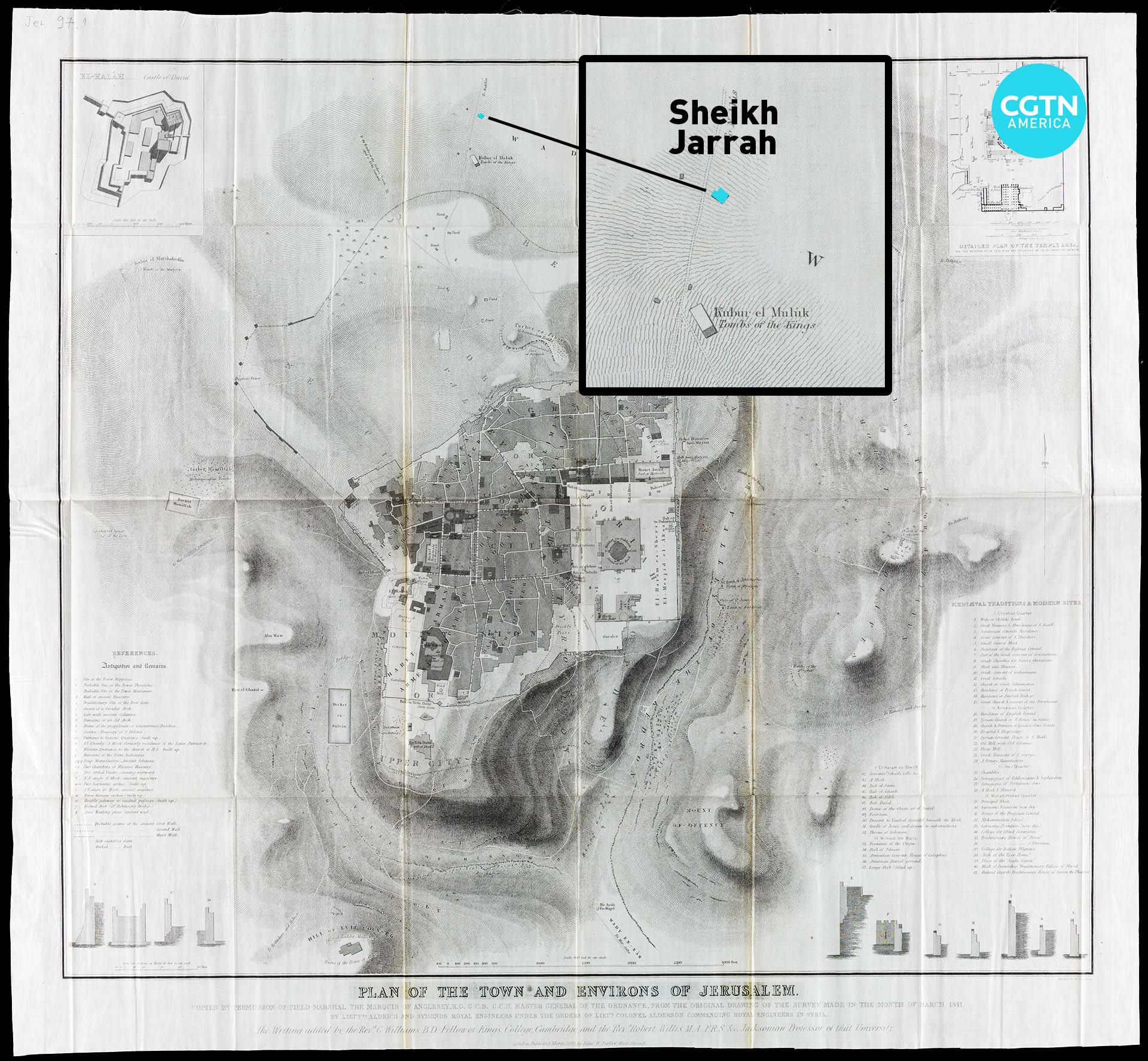
A drawing of a geographical survey made in 1841 by Lieutts of Jerusalem and the environs. The Sheikh Jarrah mosque is highlighted in blue at the top.
A drawing of a geographical survey made in 1841 by Lieutts of Jerusalem and the environs. The Sheikh Jarrah mosque is highlighted in blue at the top.
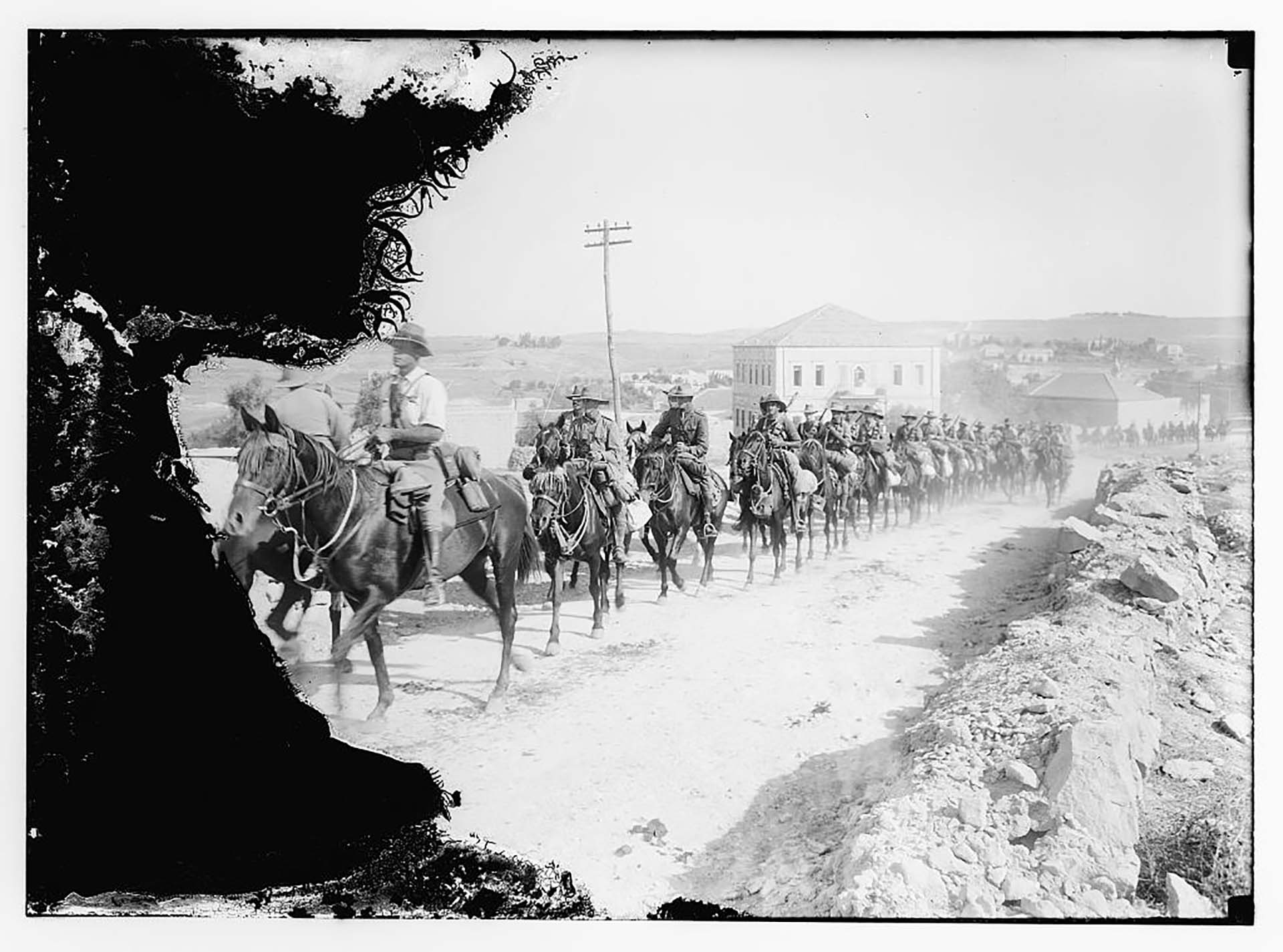
The 6th Australian light-horse regiment marching in Sheikh Jarrah, on the way to Mt. Scopus in 1918. Australian forces were utilized by the British Mandate for Palestine. (Library of Congress)
The 6th Australian light-horse regiment marching in Sheikh Jarrah, on the way to Mt. Scopus in 1918. Australian forces were utilized by the British Mandate for Palestine. (Library of Congress)

The 6th Australian light-horse regiment camped at Sheikh Jarrah, on the way to Mt. Scopus in 1918. Australian forces were utilized by the British Mandate for Palestine. (Library of Congress)
The 6th Australian light-horse regiment camped at Sheikh Jarrah, on the way to Mt. Scopus in 1918. Australian forces were utilized by the British Mandate for Palestine. (Library of Congress)

A photo from sometime from 1890-1900 from Mount Scopus, near the Sheikh Jarrah neighborhood. Published in 1905 by the Detroit Photographic Company. (Library of Congress)
A photo from sometime from 1890-1900 from Mount Scopus, near the Sheikh Jarrah neighborhood. Published in 1905 by the Detroit Photographic Company. (Library of Congress)
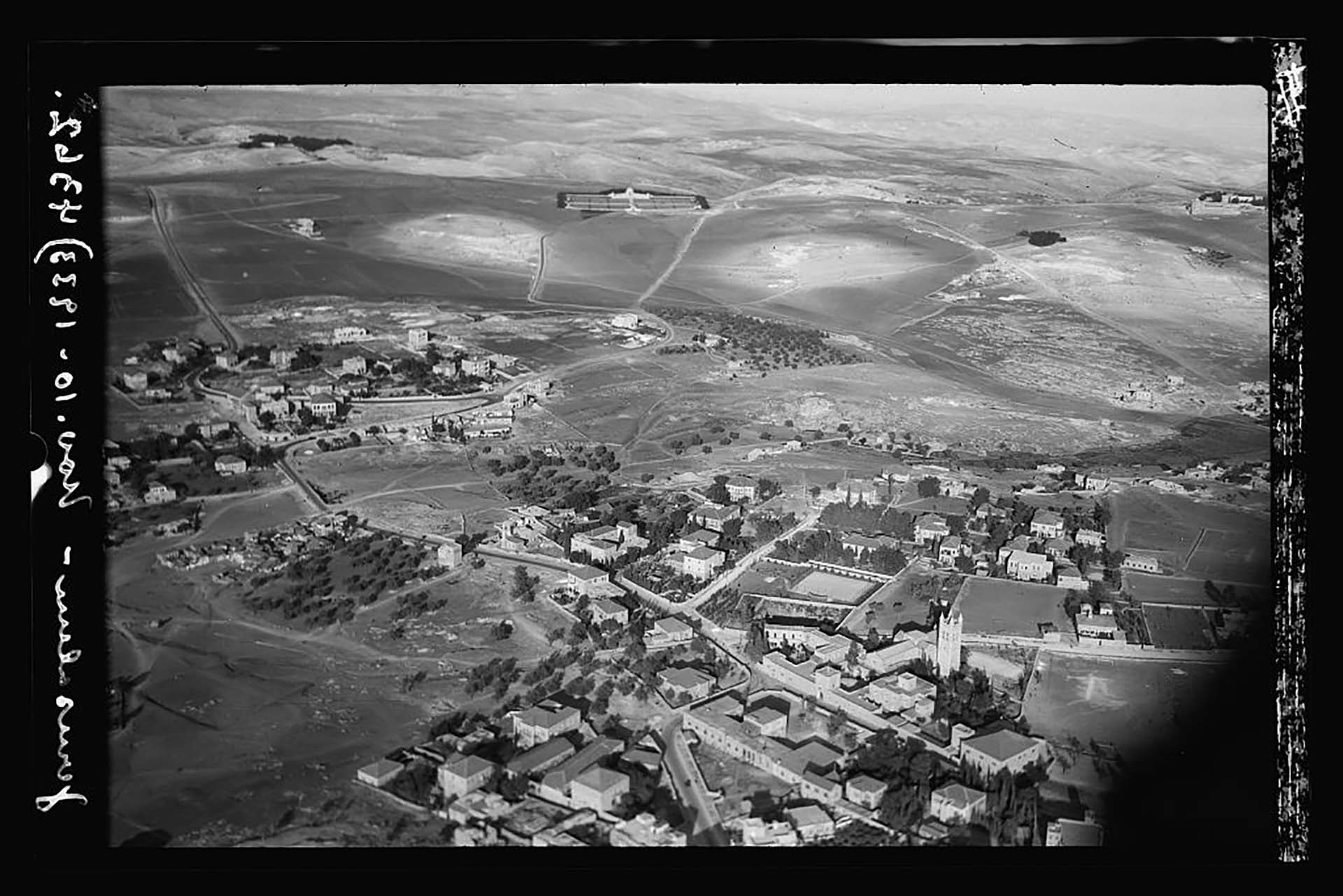
An air view of the Sheikh Jarrah quarter in 1931, including the U.S. colony. (Library of Congress)
An air view of the Sheikh Jarrah quarter in 1931, including the U.S. colony. (Library of Congress)
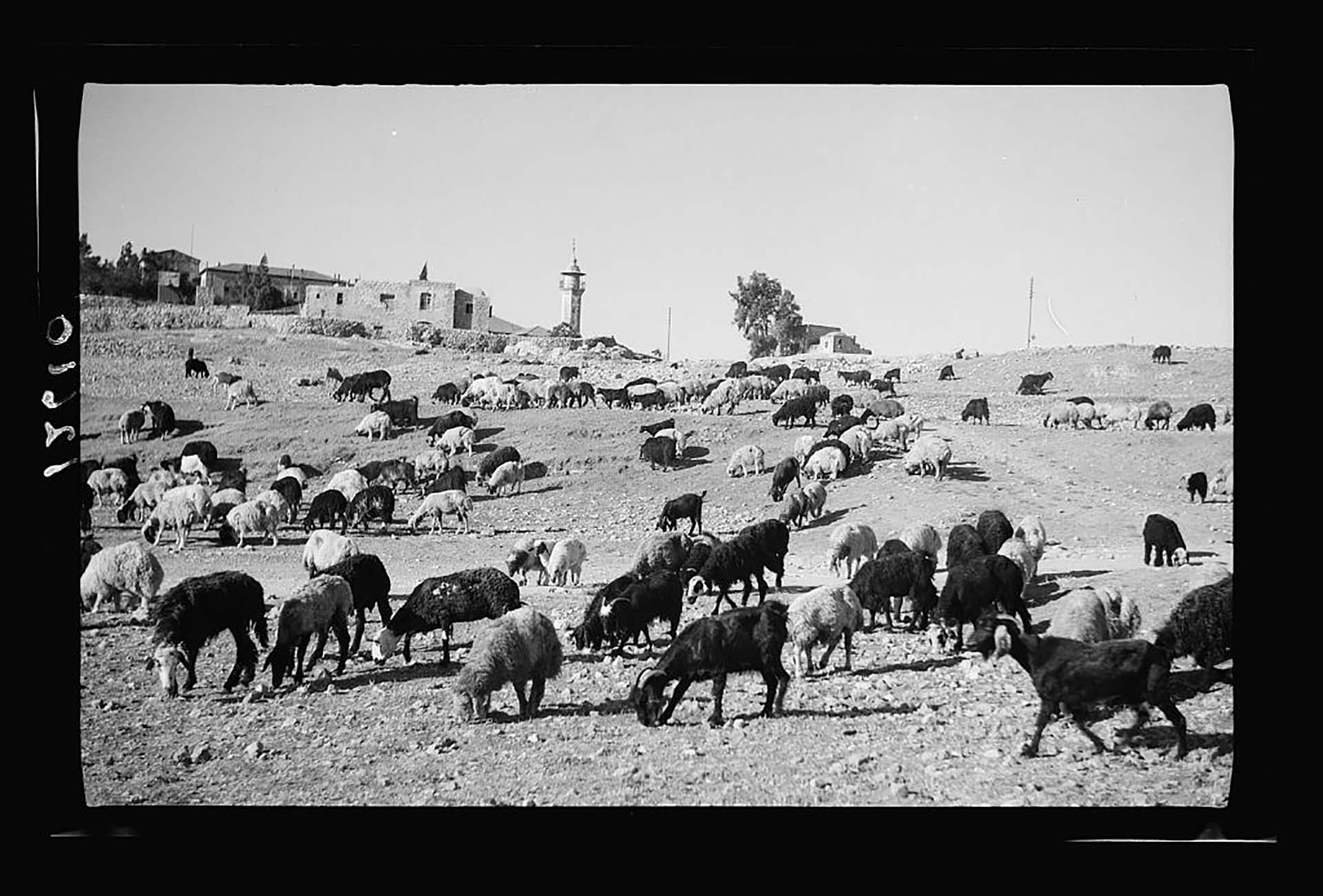
Goats and sheep near Sheikh Jarrah sometime between 1940-1946. (Library of Congress)
Goats and sheep near Sheikh Jarrah sometime between 1940-1946. (Library of Congress)
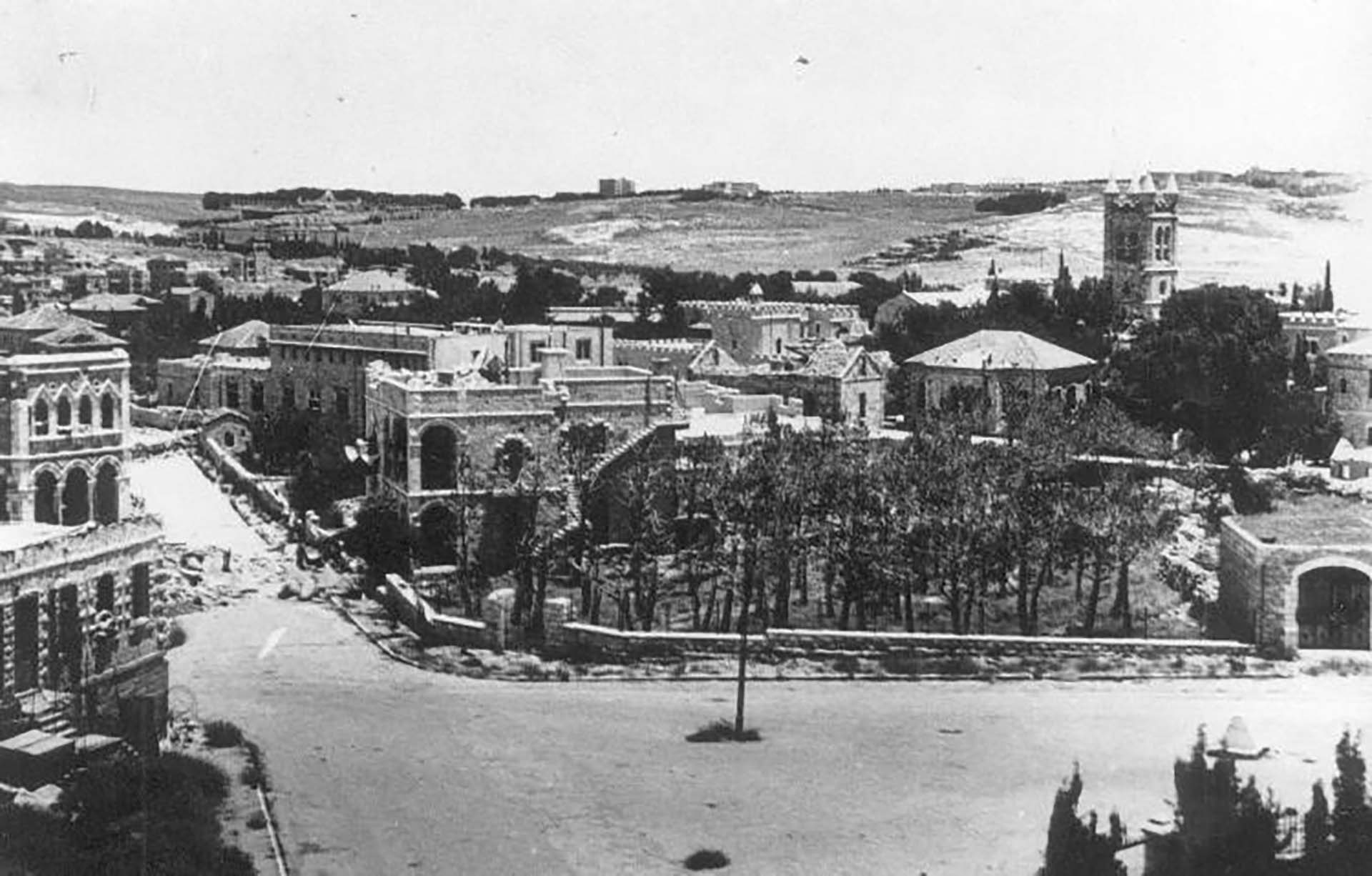
Sheikh Jarrah on April 24, 1948, briefly held by the Israeli Defense Force. (Palmach archive Harel 5th Battalion)
Sheikh Jarrah on April 24, 1948, briefly held by the Israeli Defense Force. (Palmach archive Harel 5th Battalion)
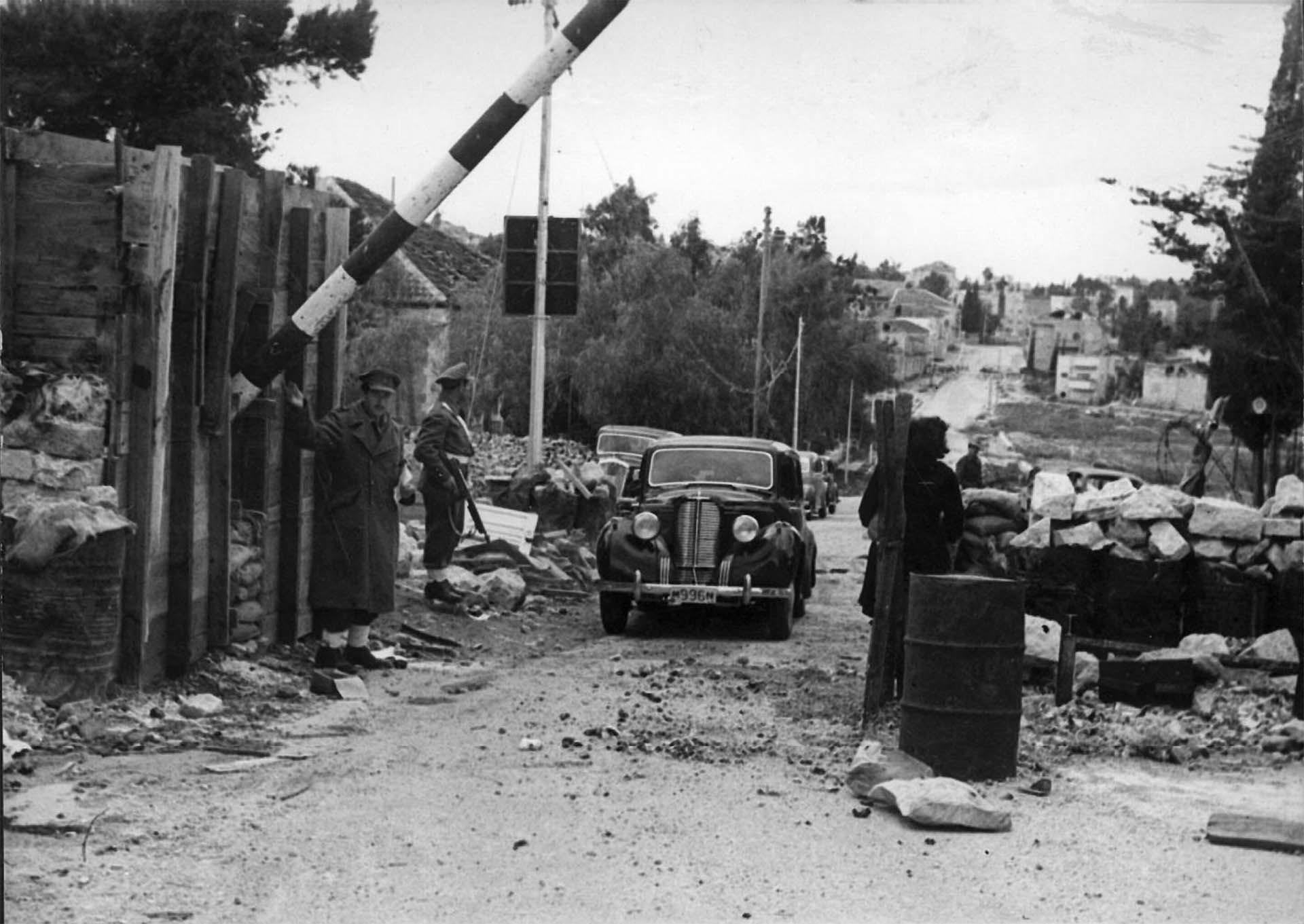
A caravan crosses through "the abandoned area between the Jewish and Arab lines" in Sheikh Jarrah on December 25, 1948. (Central Zionist Archives/Harvard University)
A caravan crosses through "the abandoned area between the Jewish and Arab lines" in Sheikh Jarrah on December 25, 1948. (Central Zionist Archives/Harvard University)

The view of the Sheikh Jarrah neighborhood and Hebrew University in 1949. (Central Zionist Archives/Harvard University)
The view of the Sheikh Jarrah neighborhood and Hebrew University in 1949. (Central Zionist Archives/Harvard University)
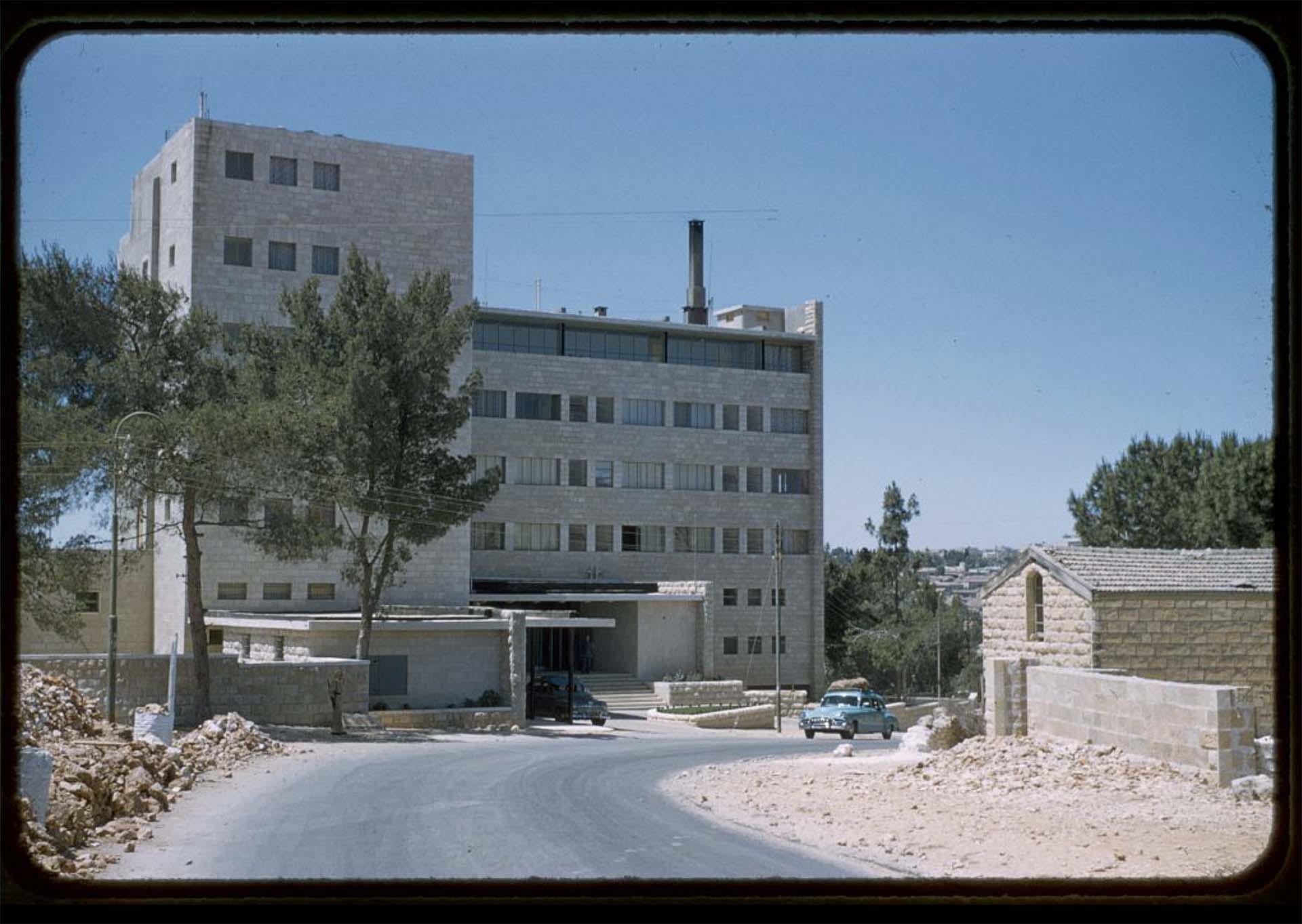
The Ambassador Hotel in Sheikh Jarrah sometime between 1948-1958. (Lewis Larsson/ Library of Congress)
The Ambassador Hotel in Sheikh Jarrah sometime between 1948-1958. (Lewis Larsson/ Library of Congress)
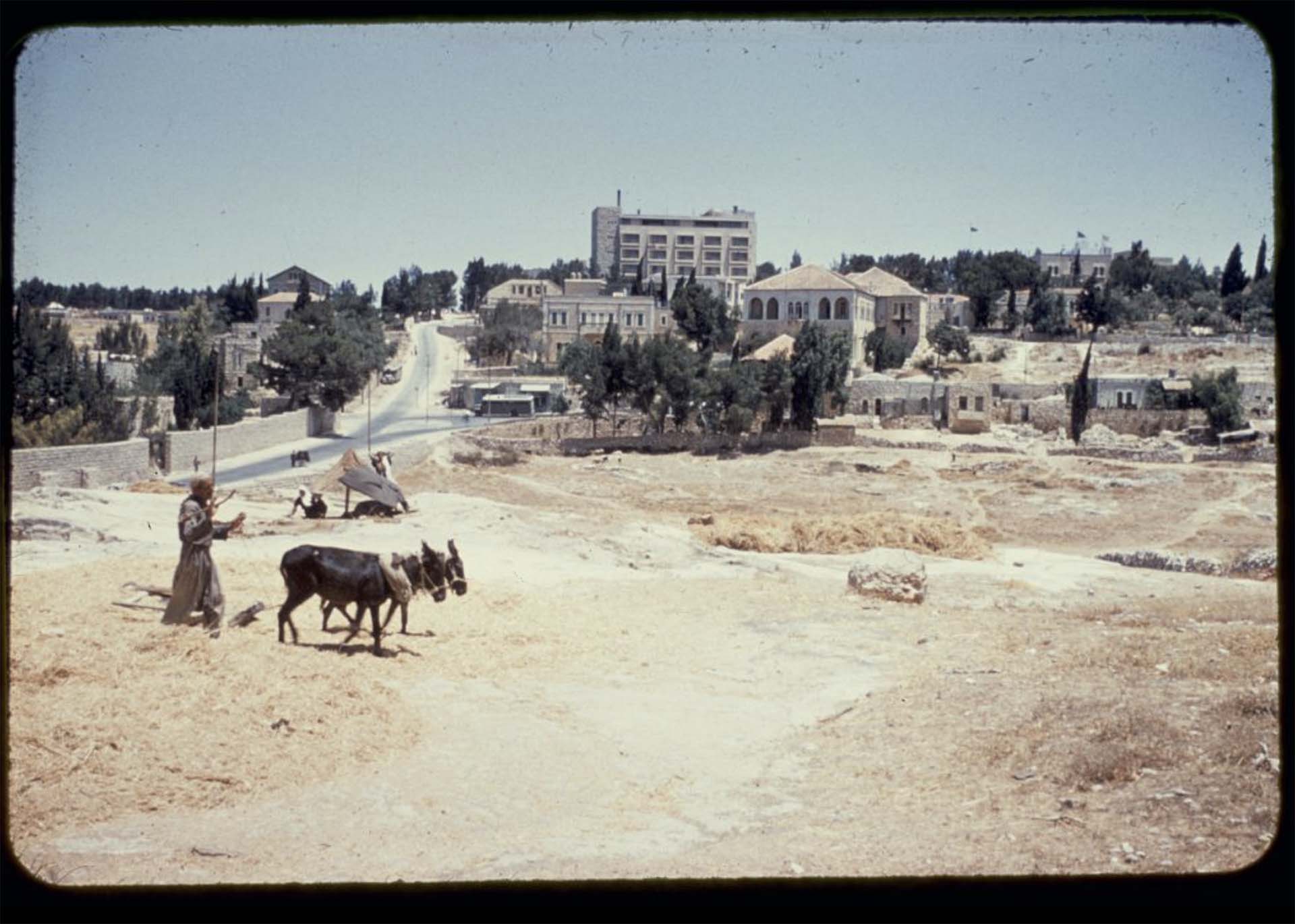
A threshing floor in Sheikh Jarrah sometime between 1948-1958. (Lewis Larsson/ Library of Congress)
A threshing floor in Sheikh Jarrah sometime between 1948-1958. (Lewis Larsson/ Library of Congress)

Construction in Sheikh Jarrah in 1978. (Rivka Harris/Harvard University)
Construction in Sheikh Jarrah in 1978. (Rivka Harris/Harvard University)
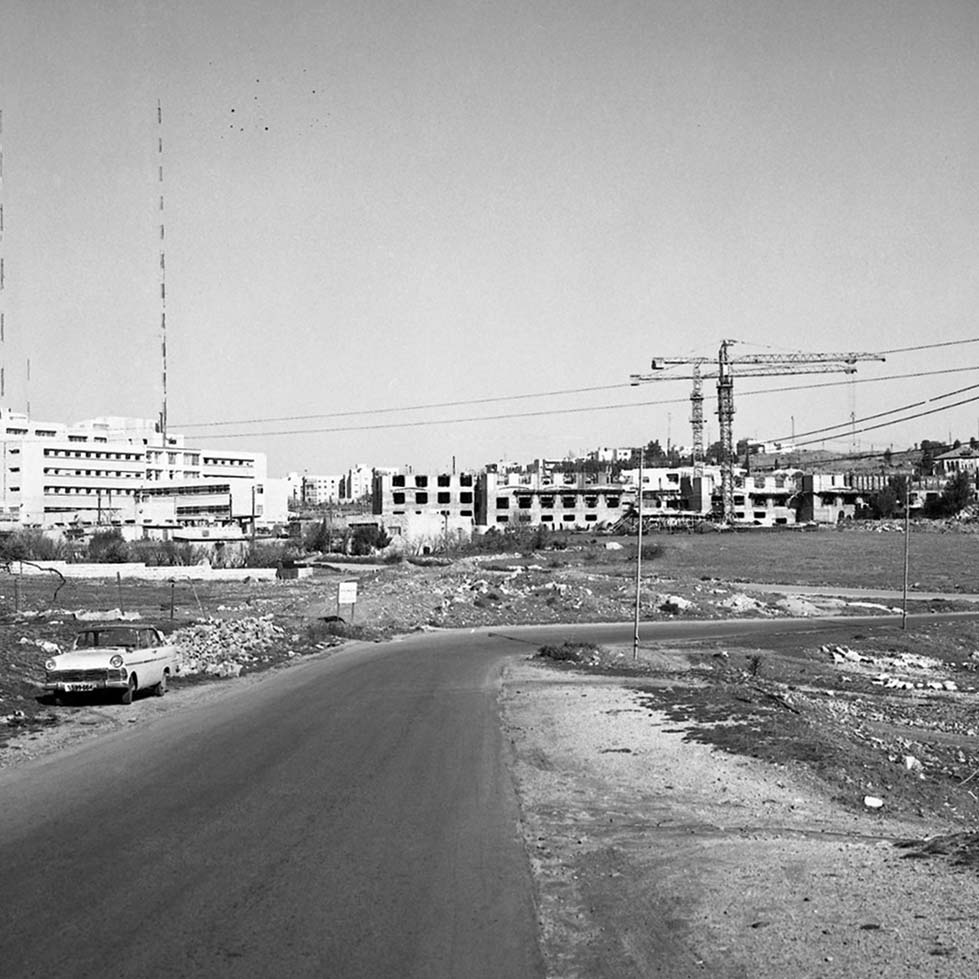
Construction in Sheikh Jarrah in 1978. (Rivka Harris/Harvard University)
Construction in Sheikh Jarrah in 1978. (Rivka Harris/Harvard University)
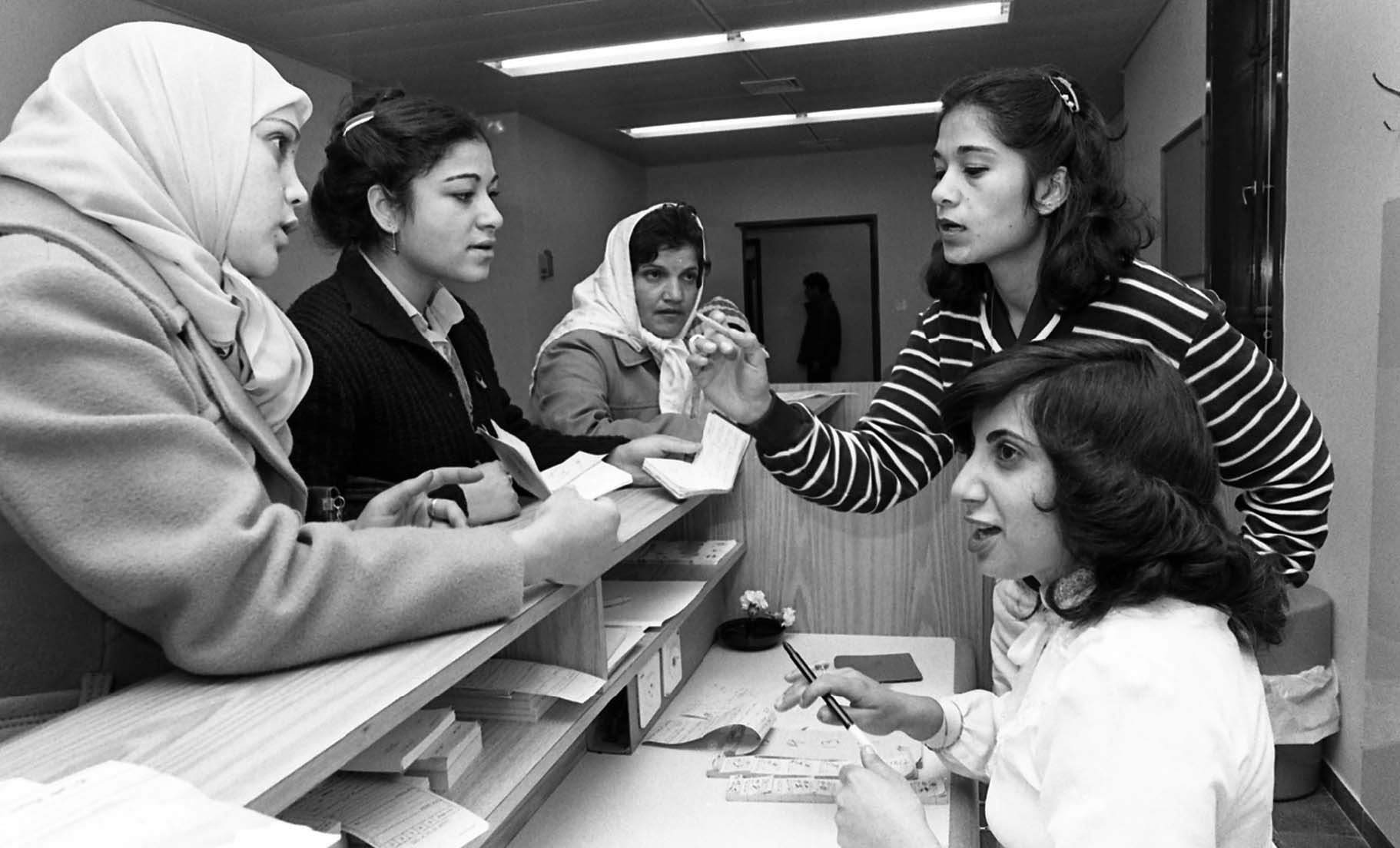
Inside the Sheikh Jarrah health center built by the Jerusalem Foundation and overseas donors in 1982. (Israel Sun/Harvard University)
Inside the Sheikh Jarrah health center built by the Jerusalem Foundation and overseas donors in 1982. (Israel Sun/Harvard University)

Inside the Sheikh Jarrah health center built by the Jerusalem Foundation and overseas donors in 1982. (Israel Sun/Harvard University)
Inside the Sheikh Jarrah health center built by the Jerusalem Foundation and overseas donors in 1982. (Israel Sun/Harvard University)
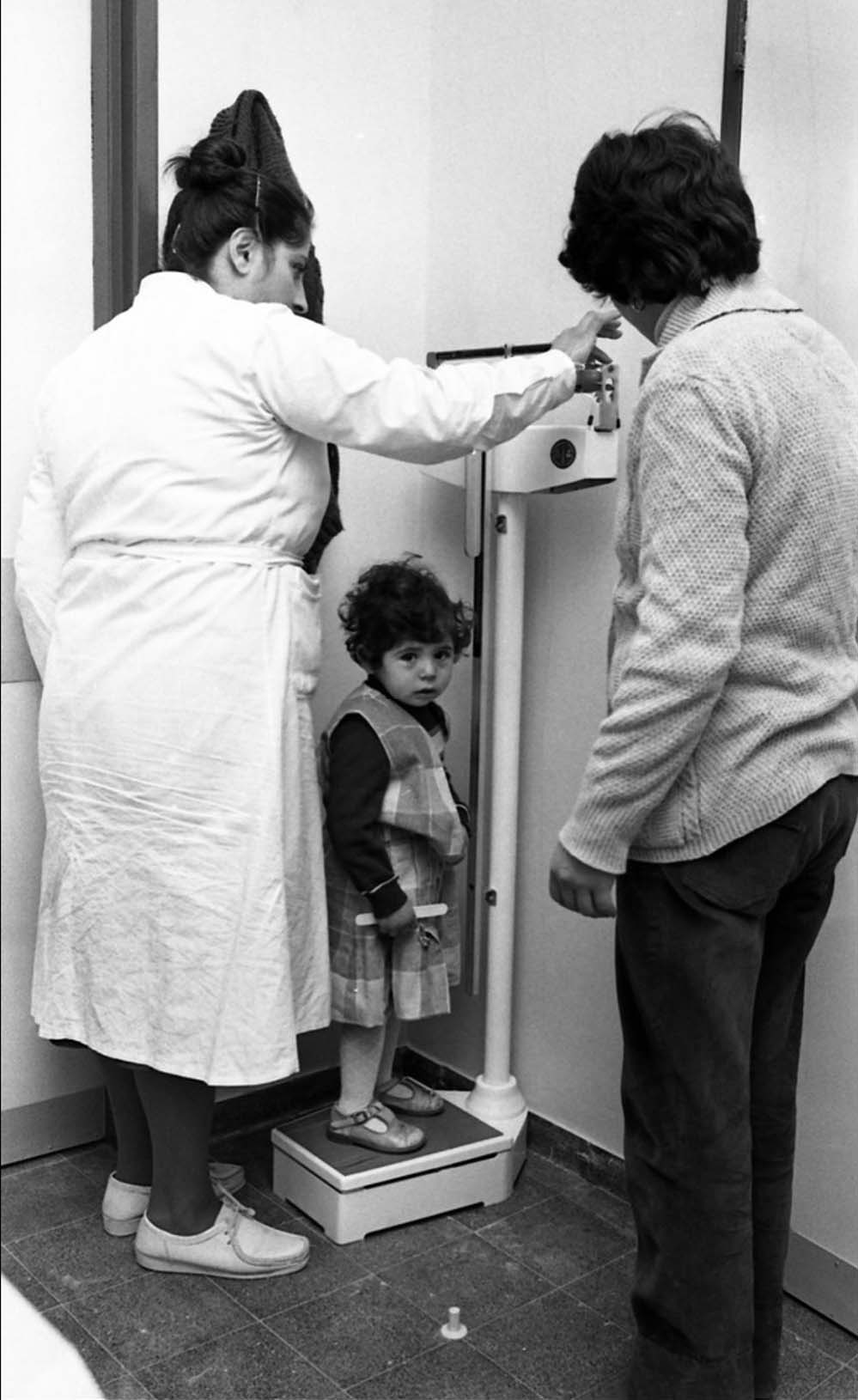
Inside the Sheikh Jarrah health center built by the Jerusalem Foundation and overseas donors in 1982. (Israel Sun/Harvard University)
Inside the Sheikh Jarrah health center built by the Jerusalem Foundation and overseas donors in 1982. (Israel Sun/Harvard University)
In the aftermath of what Israel calls its War of Independence, and what Palestinians call the Nakba or catastrophe, Israel controlled 80 percent of what was once British-governed Palestine - while the holy city of Jerusalem was split in half.
In a series of agreements after the war, Egypt gained control of the Gaza Strip, and Jordan took control of the West Bank - which includes East Jerusalem - and Sheikh Jarrah.
When Jordan took control of East Jerusalem, it expelled Jewish families who were then resettled in Israel's West Jerusalem, to what were once Palestinian homes.
In 1956, Jordan and the U.N. built homes in Sheikh Jarrah for 28 Palestinian refugee families who were expelled from their homes during the Palestinian exodus in the creation of Israel.
Everything changed in 1967 when Israel occupied all of the West Bank as well as the Gaza Strip in the Six-Day War, also known as the second Arab-Israeli war.
More than 400,000 Palestinians were forced to leave their homes -- half of them had been refugees in the 1948 war, according to the human rights group Badil.
Those that remained were subject to colonization by Israel.
Scroll left and right to view gallery:
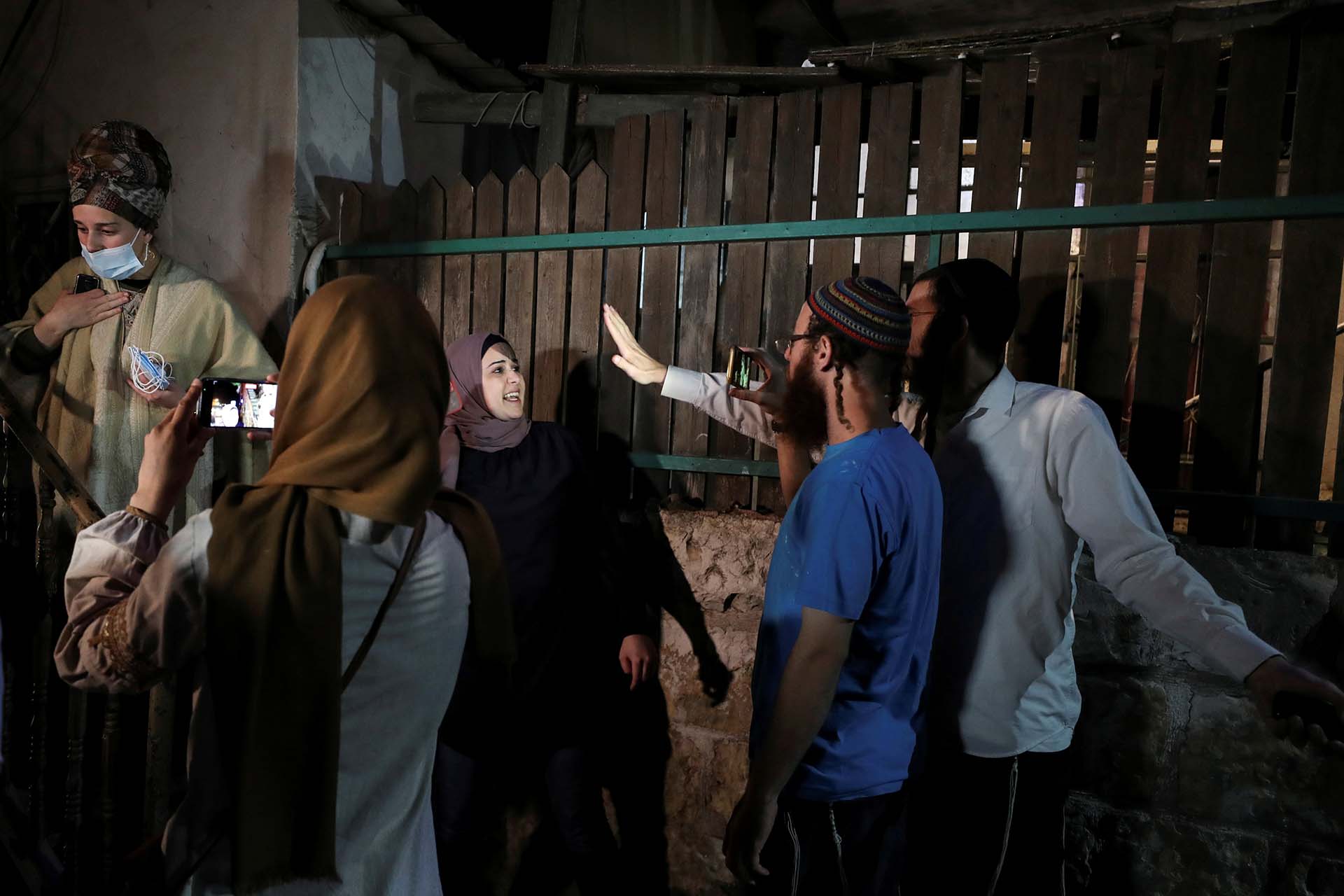
A Jewish settler resident and a Palestinian resident face off in Sheikh Jarrah on May 3, 2021 a week before the recent Israel-Hamas fighting. (REUTERS/Ammar Awad)
A Jewish settler resident and a Palestinian resident face off in Sheikh Jarrah on May 3, 2021 a week before the recent Israel-Hamas fighting. (REUTERS/Ammar Awad)
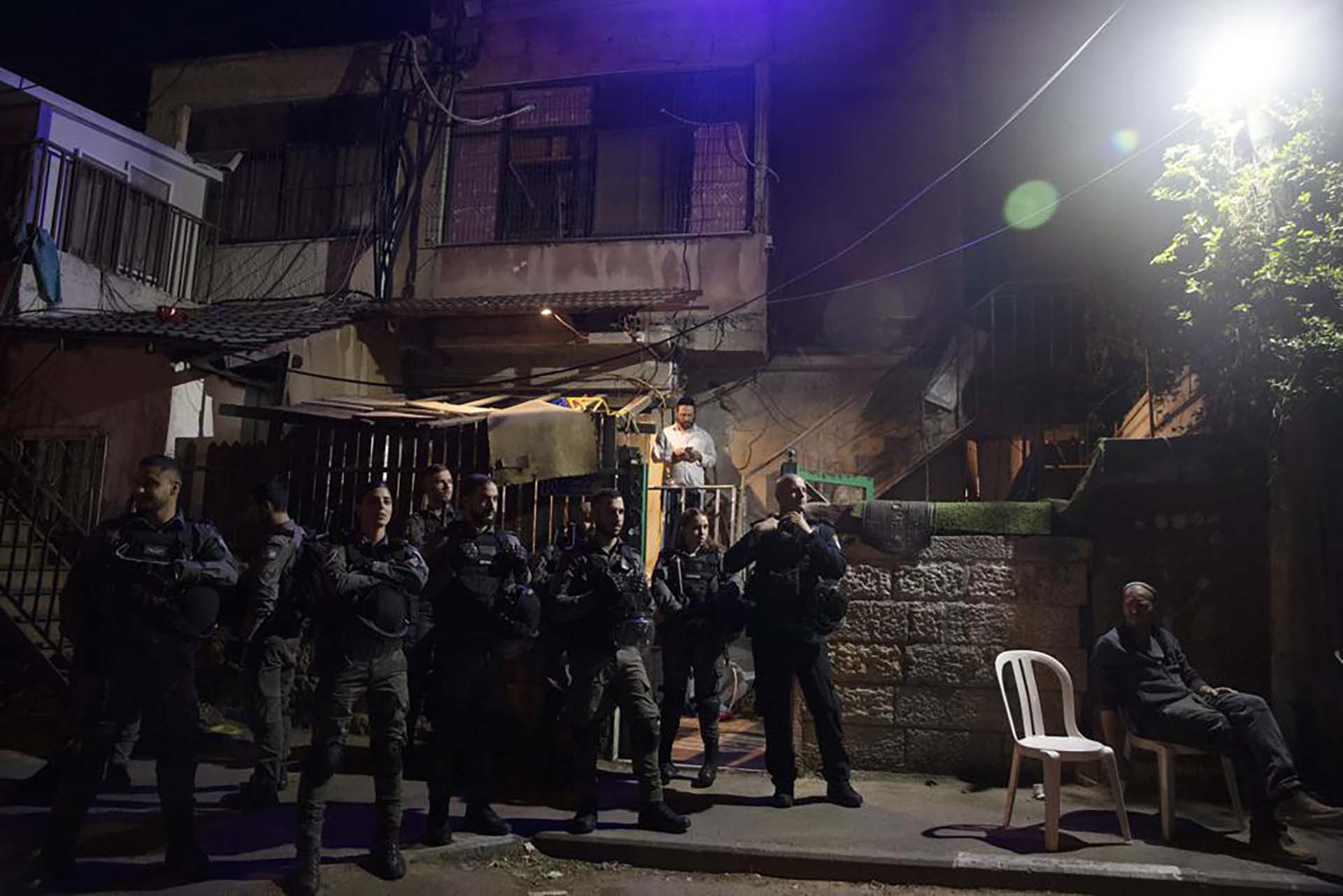
Israeli police stand guard in front of a Palestinian home occupied by Jewish settlers in Sheikh Jarrah during a protest on May 5, 2021. (AP Photo/Maya Alleruzzo)
Israeli police stand guard in front of a Palestinian home occupied by Jewish settlers in Sheikh Jarrah during a protest on May 5, 2021. (AP Photo/Maya Alleruzzo)
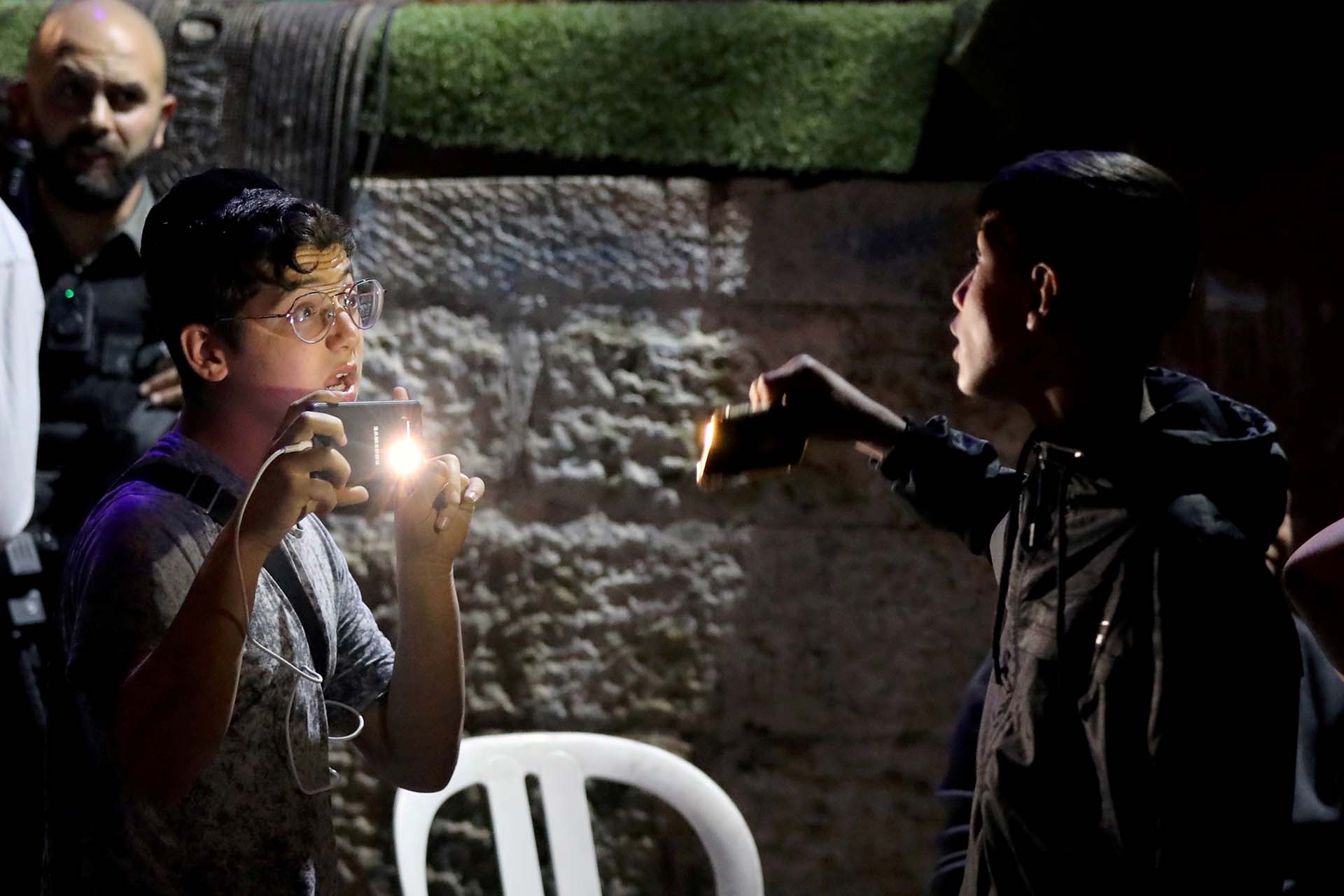
A Jewish settler and a Palestinian confront each other with their mobile phones in Sheikh Jarrah on May 5, 2021. (REUTERS/Ammar Awad)
A Jewish settler and a Palestinian confront each other with their mobile phones in Sheikh Jarrah on May 5, 2021. (REUTERS/Ammar Awad)
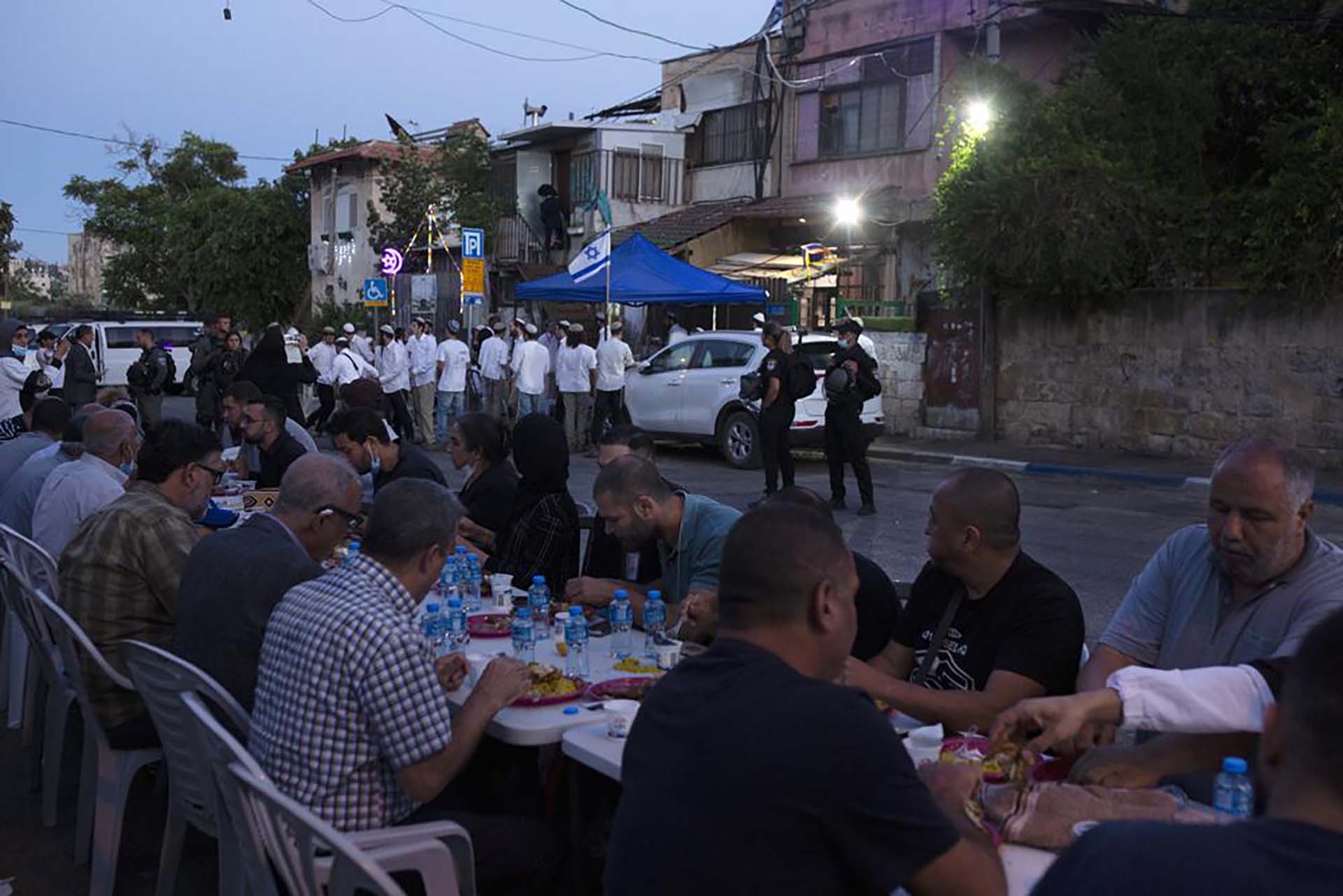
Israeli police stand guard as Palestinian Muslims break their fast during the holy month of Ramadan and Jewish settlers gather to begin Shabbat at a Palestinian house occupied by settlers in Sheikh Jarrah on May 7, 2021. (AP Photo/Maya Alleruzzo)
Israeli police stand guard as Palestinian Muslims break their fast during the holy month of Ramadan and Jewish settlers gather to begin Shabbat at a Palestinian house occupied by settlers in Sheikh Jarrah on May 7, 2021. (AP Photo/Maya Alleruzzo)
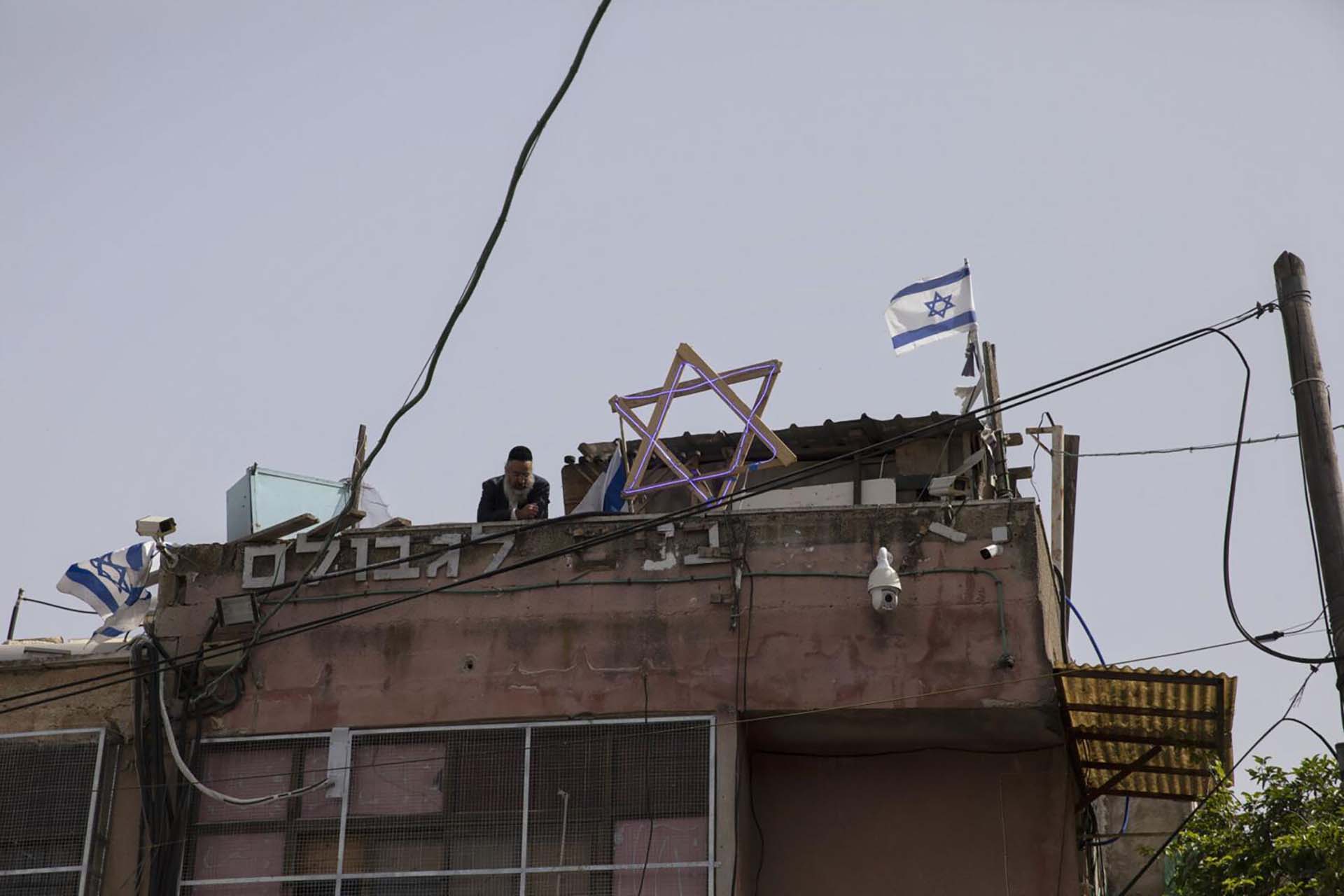
An Israeli ultra-Orthodox Jewish man looks down from a house in Sheikh Jarrah on May 10, 2021. (AP Photo/Sebastian Scheiner)
An Israeli ultra-Orthodox Jewish man looks down from a house in Sheikh Jarrah on May 10, 2021. (AP Photo/Sebastian Scheiner)
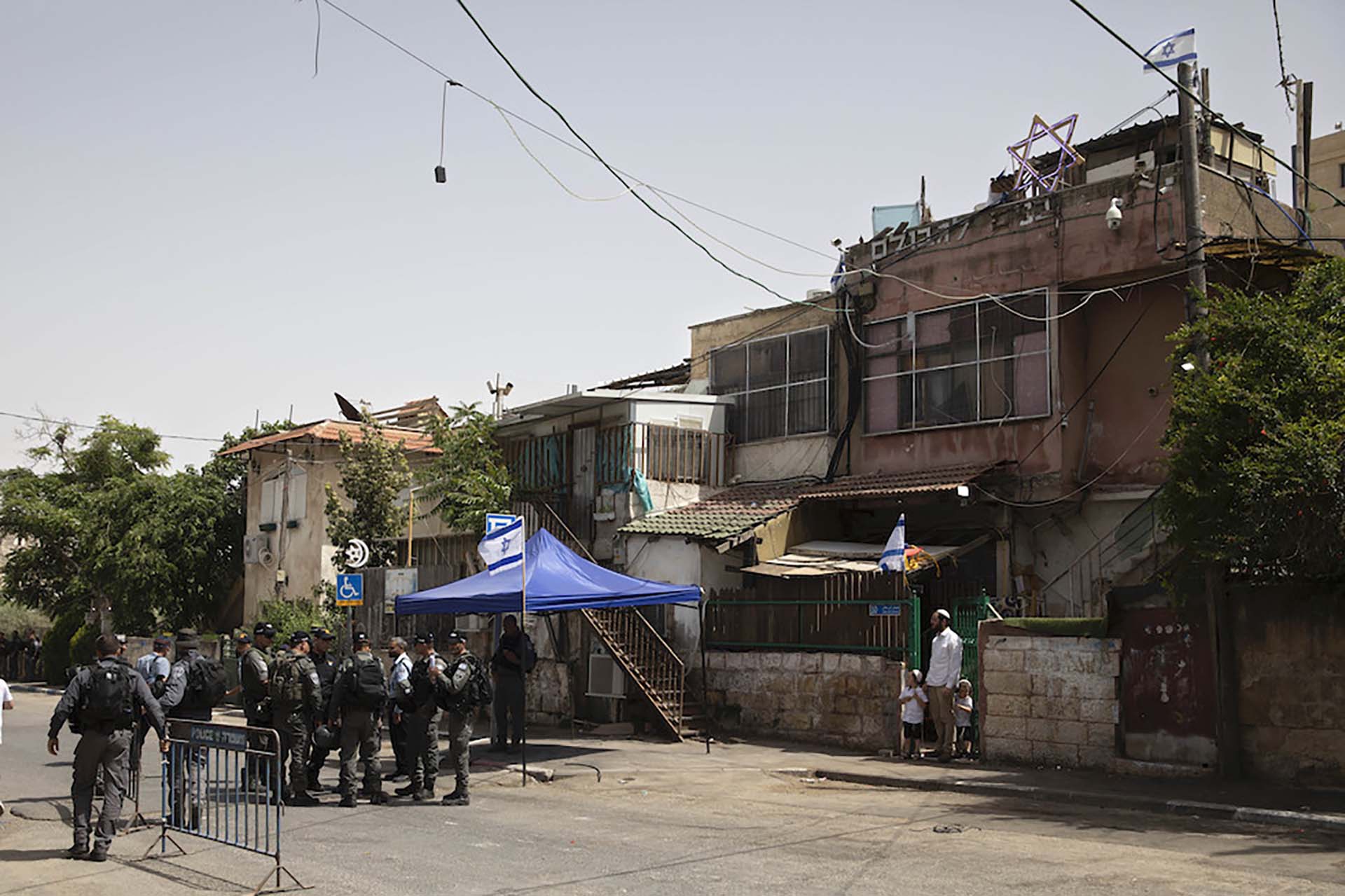
An Israeli ultra-Orthodox man stands at the entrance to a house in Sheikh Jarrah on May 10, 2021. (AP Photo/Sebastian Scheiner)
An Israeli ultra-Orthodox man stands at the entrance to a house in Sheikh Jarrah on May 10, 2021. (AP Photo/Sebastian Scheiner)
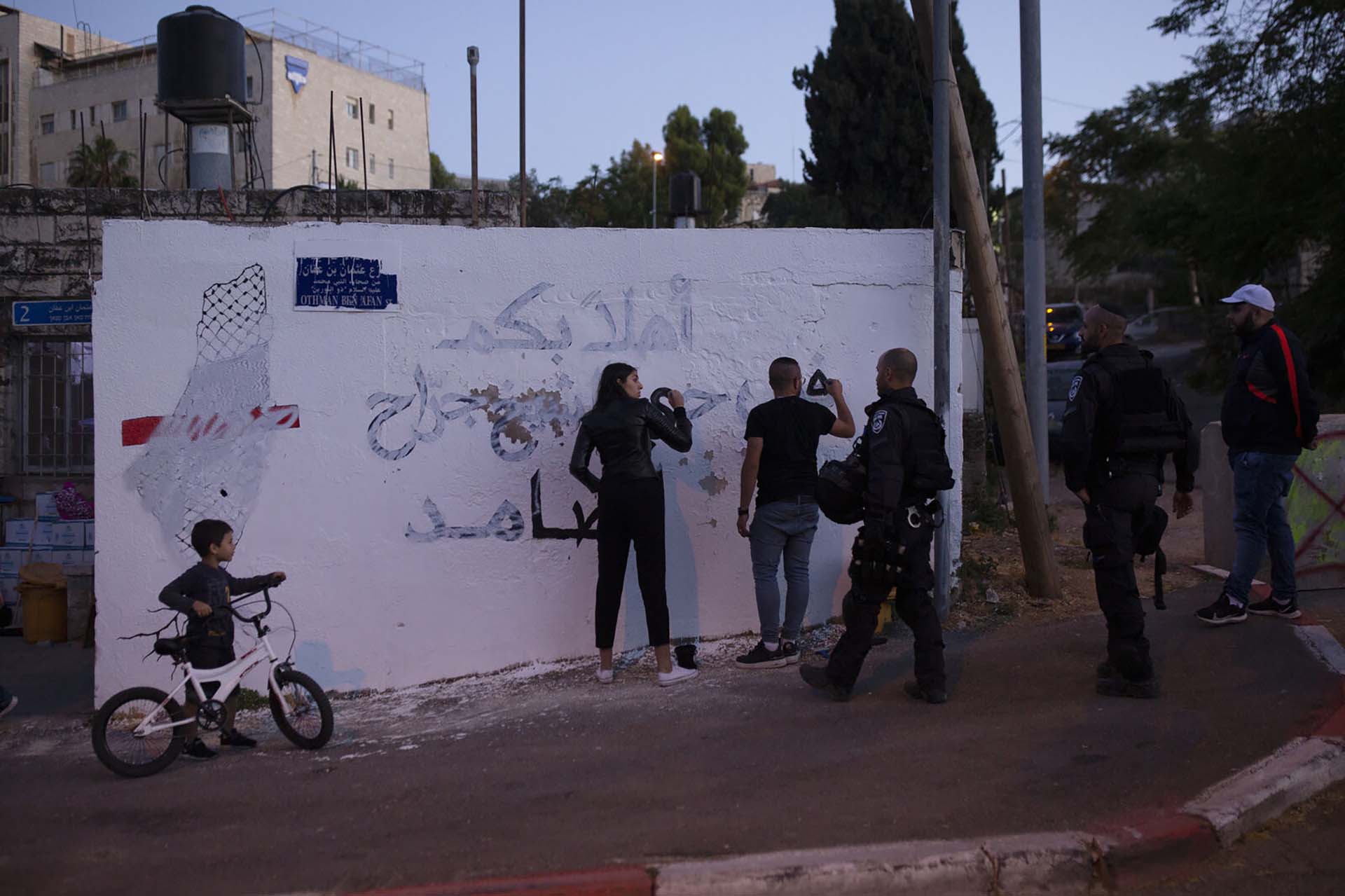
Palestinian activists are approached by Israeli police as they repair a mural that was defaced by a Jewish settler in Sheikh Jarrah on May 24, 2021. (AP Photo/Maya Alleruzzo)
Palestinian activists are approached by Israeli police as they repair a mural that was defaced by a Jewish settler in Sheikh Jarrah on May 24, 2021. (AP Photo/Maya Alleruzzo)

Graffitti marks the outer wall of the al-Kurd family property in Sheikh Jarrah, one of several Palestinian families under threat of forced eviction on May 11, 2021. Part of their property is already occupied by Jewish settlers. (AP Photo/Maya Alleruzzo)
Graffitti marks the outer wall of the al-Kurd family property in Sheikh Jarrah, one of several Palestinian families under threat of forced eviction on May 11, 2021. Part of their property is already occupied by Jewish settlers. (AP Photo/Maya Alleruzzo)
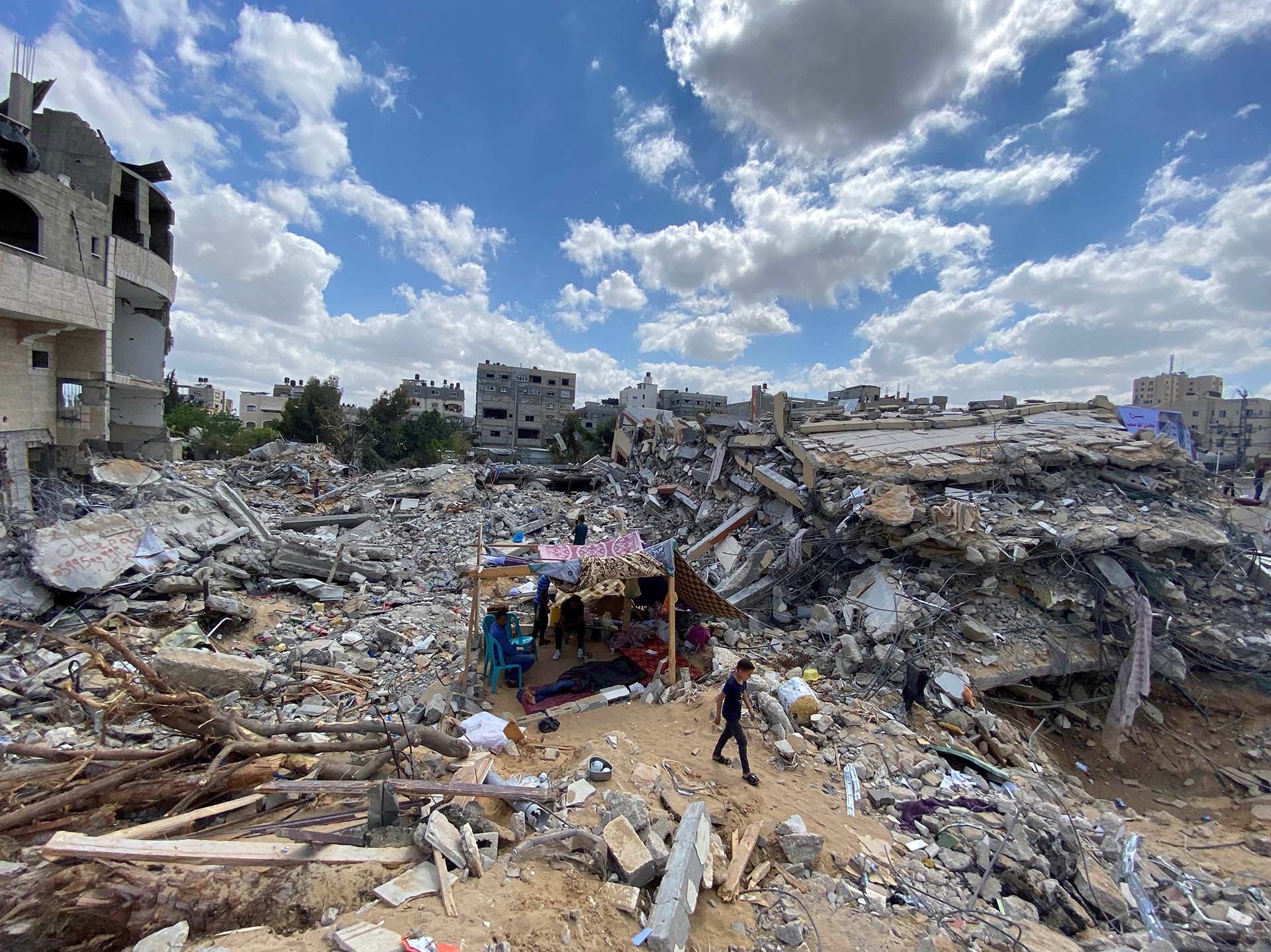
A Palestinian boy walks near their makeshift tent on May 23, 2021, amid the rubble of their houses which were destroyed by Israeli air strikes during the Israeli-Palestinian fighting in Gaza. (REUTERS/Mohammed Salem)
A Palestinian boy walks near their makeshift tent on May 23, 2021, amid the rubble of their houses which were destroyed by Israeli air strikes during the Israeli-Palestinian fighting in Gaza. (REUTERS/Mohammed Salem)
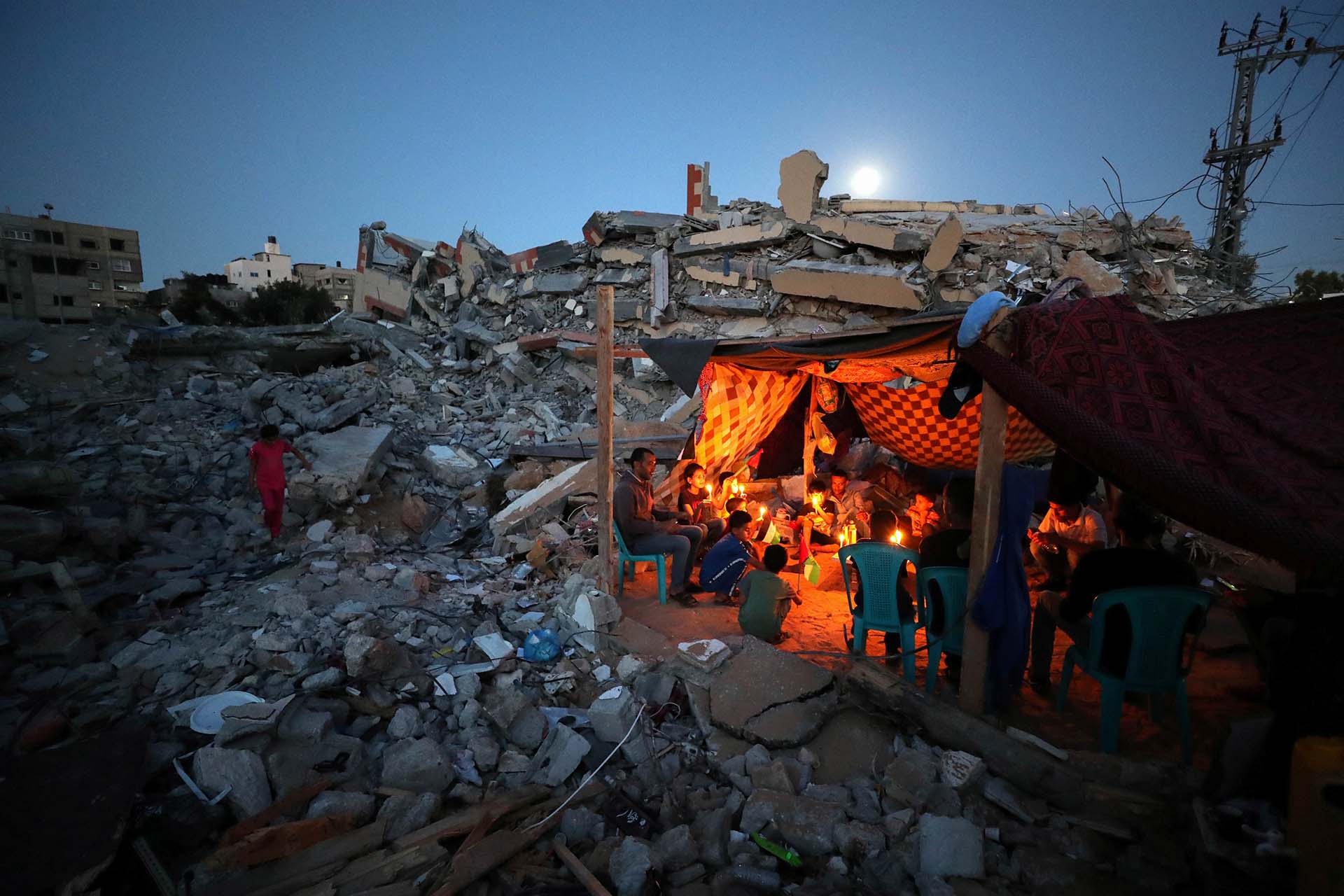
A Palestinian family holds candles on in a makeshift tent on May 25, 2021, amid the rubble of their houses which were destroyed by Israeli air strikes during the Israeli-Palestinian fighting in Gaza. (REUTERS/Mohammed Salem)
A Palestinian family holds candles on in a makeshift tent on May 25, 2021, amid the rubble of their houses which were destroyed by Israeli air strikes during the Israeli-Palestinian fighting in Gaza. (REUTERS/Mohammed Salem)

A Palestinian flag flies as the ruins of houses on May 25, 2021, which were destroyed by Israeli air strikes during the Israeli-Palestinian fighting in Gaza., are seen, in Gaza Strip, May 25, 2021. (REUTERS/Mohammed Salem)
A Palestinian flag flies as the ruins of houses on May 25, 2021, which were destroyed by Israeli air strikes during the Israeli-Palestinian fighting in Gaza., are seen, in Gaza Strip, May 25, 2021. (REUTERS/Mohammed Salem)
In 1970, Israel adopted the Law on Legal and Administrative Affairs that allows Jews to reclaim property in East Jerusalem lost in 1948 to Jordan if they can prove ownership.
However the law does not allow Palestinians to reclaim land or property they once owned in other parts of Israel.
Two Jewish trusts went to the Israeli courts in the 1970s to contest the ownership of homes in Sheikh Jarrah based on records dating back to 1875.
The court found that the Palestinian families didn't own the land but had tenant rights and could remain if they paid rent.
The families refused to pay rent in protest, and the groups went to court again asking for them to be evicted.
Families that built extensions or other homes on their properties even saw Jewish settlers move in to those structures, forcing them to live side-by-side with people on their own property.
After years of legal battles, 43 Palestinians were evicted from their homes in 2002 and Israeli settlers moved into their properties.
Evictions continued for one family in 2008, two families in 2009 and one in 2017.
The U.S. State Department has called the evictions a violation of Israel's obligations under the Road Map for Peace. The United Nations has called the forced removal of Palestinian families a potential war crime while Israeli officials term it a "real-estate dispute between private parties."
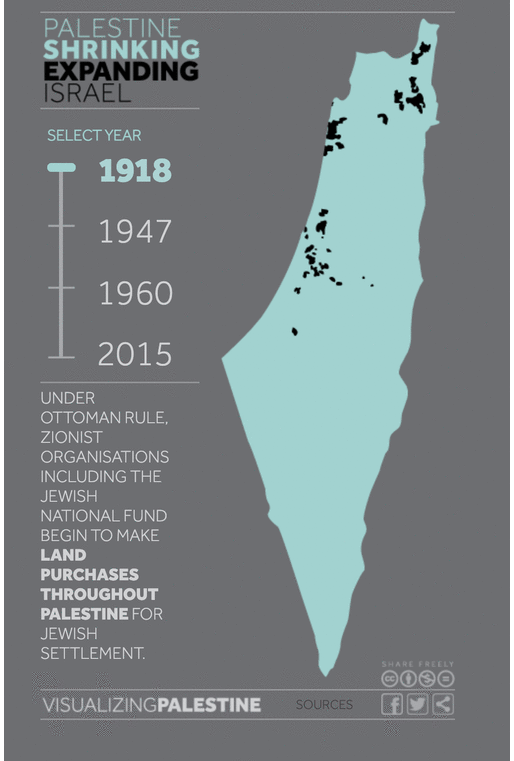
The transformation of historic Palestine into Israel, mapping the extent of the territory now defined as Israeli state land. (Source: Visualizing Palestine)
The transformation of historic Palestine into Israel, mapping the extent of the territory now defined as Israeli state land. (Source: Visualizing Palestine)
In 2020, the courts ordered the evictions of 13 Palestinian families in Sheikh Jarrah. The families have appealed, and the Israeli Supreme Court was to rule on the cases this past March. The cases have now been delayed due to the current tensions.
For years, Palestinians and Israelis opposed to the settlements have held daily protests over the evictions in Sheikh Jarrah. Those protests escalated ahead of the anticipated eviction decision by the Supreme Court.
On May 6, Israeli forces clashed with Palestinians at the Dome of the Rock shrine and the Temple Mount in Jerusalem.
Israeli forces stormed the mosque with rubber bullets, stun grenades and tear gas to clear the area of Palestinians, who Israel said had been gathering stones and Molotov cocktails. About 300 Palestinians and two dozen Israeli police were wounded in the fighting.
On May 10, the pro-Palestinian militant group Hamas, saying Israel had not stood down at the al-Aqsa mosque, launched dozens of rockets from Gaza into Israeli areas. In response, Israel fired back with air strikes, some of which leveled entire buildings in Gaza.
After two weeks of fighting, 200 Palestinians were killed in Gaza, including 58 children. Meanwhile, 10 Israelis were killed, two of them children.
00:55
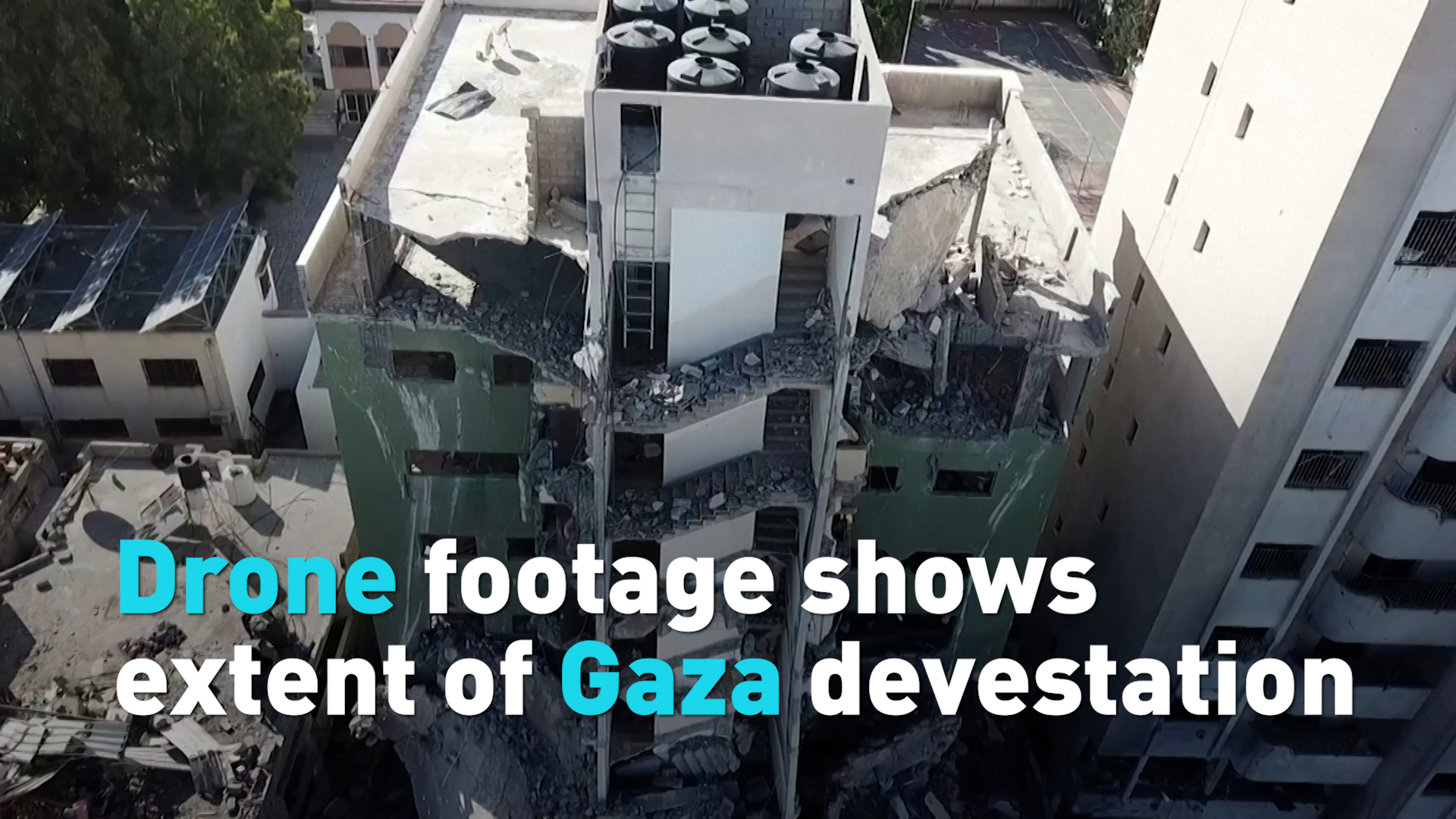
The ceasefire brokered by Egypt, Qatar and the United Nations went into effect on May 21, but many are wary that any further escalation of tensions could set off more killing.
On Monday, the Israeli police said more than 1,500 people have been arrested on suspicion of involvement in the violent clashes between Jews and Arabs earlier this month. The New York Times reported that a police spokesman said that 70 percent of those arrested were Arab, and 30 percent were Jewish.
Many other Sheikh Jarrahs
Sheikh Jarrah is just one location that Jewish settlers have targeted. Settlers are also seeking evictions in the Silwan neighborhood, which is predominantly Palestinian, and other parts of East Jerusalem.
Since 1967, Jewish settlements have grown throughout East Jerusalem. There are now about 215,000 Jews in East Jerusalem, many in government-subsidized new construction. Meanwhile the 340,000 Palestinians in East Jerusalem live in overcrowded neighborhoods.
Construction of Jewish settlements were fully supported by the U.S. under former President Donald Trump.
Trump recognized Israeli sovereignty over the Golan Heights in 2019 and also moved the U.S. Embassy from Tel Aviv to Jerusalem in 2017 and gave unilateral support to Israel's government under right-wing Prime Minister Benjamin Netanhayu - who has vowed to annex a quarter of the West Bank.
Trump's Secretary of State Mike Pompeo also visited an Israeli settlement in the West Bank in 2020, a first for a top U.S. diplomat.
00:28
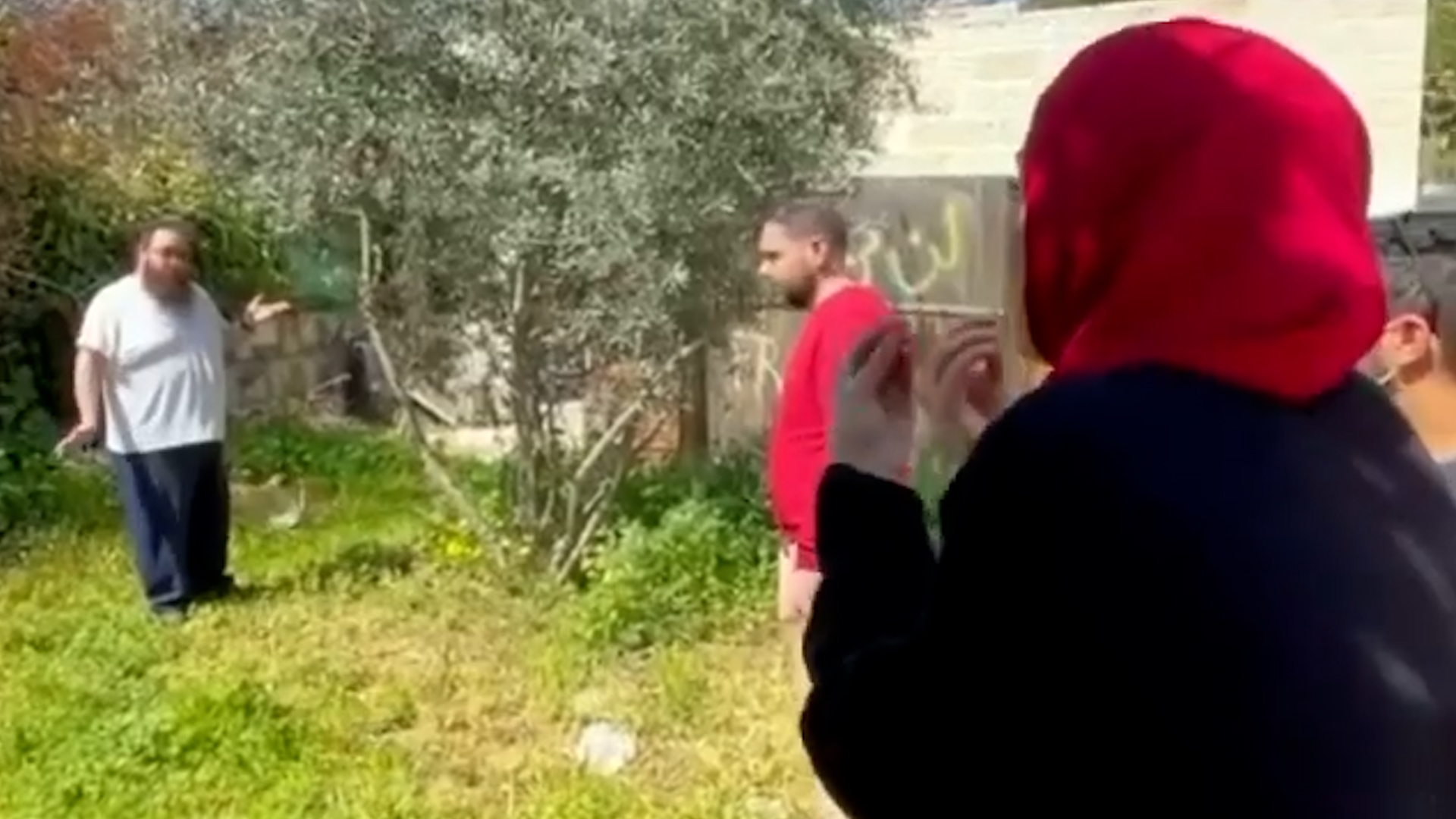
Video above: A Palestinian family's video of their interaction with a Jewish settler who lives in part of their home went viral on social media on May 2, 2021. (@muna.kurd15 on Instagram)
In the first two years of Trump's presidency, Jewish settlements in East Jerusalem grew 60 percent compared to the two years before Trump was elected, the watchdog group Peace Now has found after battling for the data from the city.
While Palestinian residents make up more than 60 percent of East Jerusalem, they have only been given 30 percent of building permits since 1991, Peace Now found.
This forces Palestinians to remain confined to crowded neighborhoods and those who build without permits risk having their homes demolished.
At least 112 Palestinian housing units were demolished in the first seven months of 2019, the most in any since at least 2004, the Israeli rights group B’Tselem reported.
“In the planning vision of Jerusalem, there was no planning for the expansion of Palestinian neighborhoods,” Hagit Ofran, an expert on settlements, told the AP.
Meanwhile, there are now 4 million Palestinian registered refugees that trace their origins to the creation of Israel, according to the United Nations.
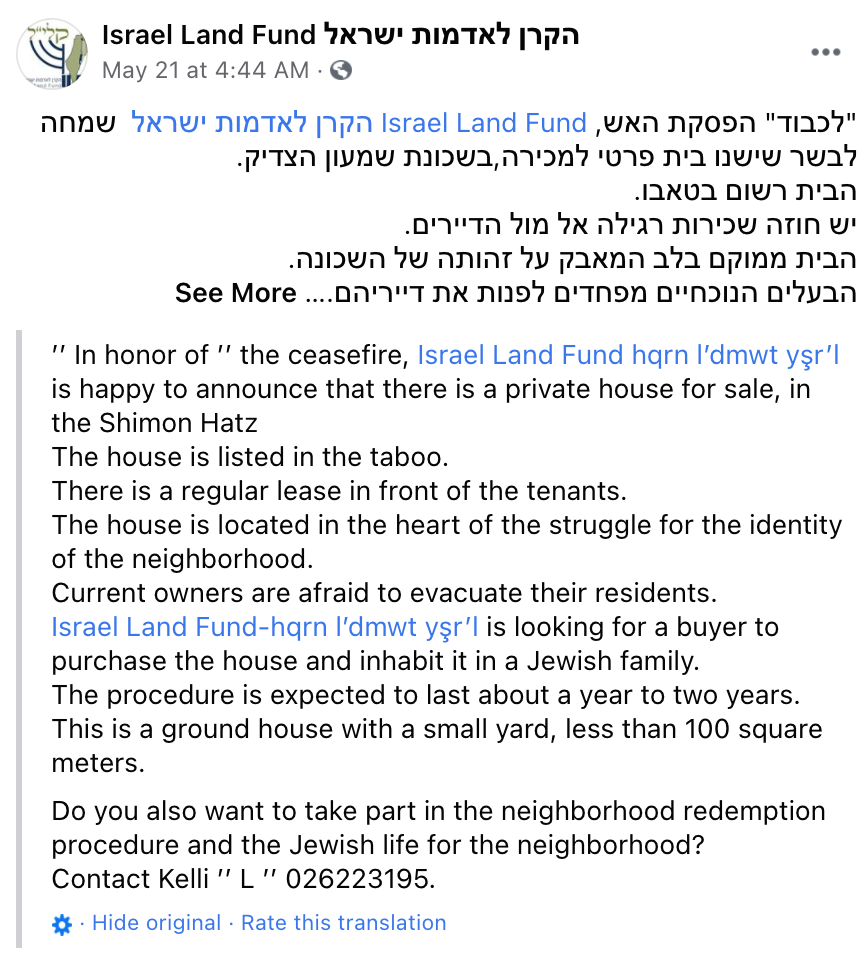
Despite the ceasefire, settlements are continuing.
On May 21 -- the day of the ceasefire -- the Jewish settlement group The Israel Land Fund wrote on Facebook:
"In honor of" the ceasefire, Israel Land Fund is pleased to announce that there is a private house for sale, in the Shimon Hatzadik neighborhood. (Jews refer to Sheikh Jarrah as Shimon Hatzadik)
The house is registered.
There is a regular lease in front of the tenants.
The house is located in the heart of the struggle for the identity of the neighborhood.
The current owners are afraid to evict their tenants.
The Israel Land Fund is looking for a buyer to purchase the house and house a Jewish family.
The procedure is expected to last about a year to two years.
This is a ground house with a small yard, less than 100 square meters.
Do you also want to take part in the process of redeeming the neighborhood and returning Jewish life to the neighborhood?
Check out The China Report, our new weekly newsletter. Subscribe here!

